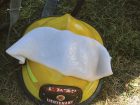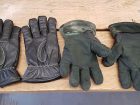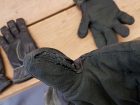
Features
Communication
Training
Back to Basics: February 2019
As we begin a new year in the Fire Fighting in Canada series, I want to examine a few key items or areas that are important for us to consider when it comes to firefighters becoming complacent.
February 1, 2019
By Mark van der Feyst
The complacency factor is usually associated with operational methods or practices when, in fact, it exists in the everyday duties and functions of a firefighter.
As time marches on, firefighters find themselves practising repeated actions in the same manner that produce little or no consequences at all. These repeated actions are actions that circumvent regular practice or are a disregard to regular or standard practice within the department.
By having a “good” or “positive” outcome by these repeated actions, a firefighter finds himself or herself practising a complacent action which carries on. Eventually, the time comes when that one single repeated action produces a “negative” or “bad” outcome and the firefighter finds himself or herself caught by Murphy’s Law.
There are many reasons why firefighters practice complacent actions, such as: few calls to respond to, equaling fewer times to practice things right; bad attitudes towards everything in the fire service – wanting to do things their way; 30 + 2 rule: been a firefighter for two years, but act like it has been 30 years; ignorance in not willing to accept responsibility; bad leadership in ensuring firefighters follow proper practices; lack of training, no accountability.
One area that needs to be examined is with our personal protective equipment (PPE). This basic ensemble that protects us from the dangers of our work environment requires proper and standard practices to ensure that it will protect us when the time comes.
The first part of PPE is with our inspection of it. The word PPE has one key word in it, and that word is “personal.” The gear that is issued to a firefighter is personal gear, meaning that only that firefighter is going to wear it. The days of sharing gear have exited into the past although there are some departments, I’m sure, that still go this route. We are seeing personal issue for helmets, boots, gloves, hoods, jackets, pants and SCBA facepieces.
All of this personal gear needs to be inspected by the owner on a regular basis. This can mean daily, weekly, bi-weekly or monthly. Usually departments will require PPE to be inspected on a weekly or bi-weekly schedule. For firefighters that work on a full-time basis, their expectation is to inspect their gear daily. A general rule for PPE inspection is that whenever you are going to use it, inspect it.
When a firefighter is inspecting his or her gear they should look for any missing items. This can include components of the gear such as the inside liner of the jacket or pants, or one glove from the pair, or any item that comprises their PPE. If the item is missing, then the PPE is not complete and it will not function as needed.
The inspection also needs to include making sure there are no defects with the gear. This starts with looking the gear over to see if there are any holes, rips or tears that may have occurred at a previous call.
The firefighter will also want to make sure that there is no major degradation showing in the gear. This can be visible on the jacket and the pants of the PPE. The firefighter will want to open up the gear under the inside liner and hold it up to the light to see how much shines through the material. If it is see-through, there is major degradation. If there is not much light coming through, there is still good life to the outside liner. This can be done for the jacket and the pants. A visual check on the outside will also yield results by seeing the degradation in the “thinning” of the material in certain areas.
Looking for exposure to excessive heat is also another area that can be inspected. This will be a visual check and will be obvious to see. Indicators such as charred materials on the outside will be a dead giveaway. The other indicators can be the “tie-die” look of the outer material. This is where the heat has caused the colour to “run” or disappear in a certain area. The excessive heat will also cause a “browning” effect to occur on the inside liner right below where the “tie-die” spot is located. This is evidence the inside liner has been compromised.
There is also the annual inspection of gear. This is where the PPE will be sent to a third party for inspection, cleaning and repair, if needed. In this process, there is a rigorous inspection process that is followed as per National Fire Protection Association (NFPA) standards, which includes hydrostatic testing of the vapour barrier. Any repairs that are to be made are done in accordance with manufacturer’s recommendations and also NFPA requirements. Usually a report is generated by the inspection services and sent back to the department and the user of the PPE to inform them of the findings.
As basic as this process is, inspecting your PPE is a vital part of becoming non-complacent. By following proper steps and practices, firefighters will ensure themselves of a good start to any call.
Mark van der Feyst has been a member of the fire service since 1999 and is a full-time firefighter in Ontario. Mark teaches in Canada, United States and India, and is a FDIC instructor. He is the lead author of the Residential Fire Rescue book. Contact Mark at Mark@FireStarTraining.com.
Print this page



